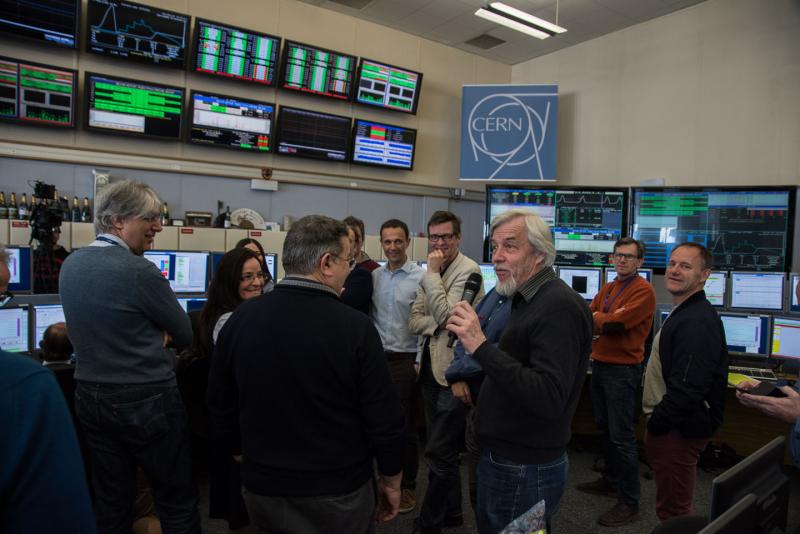LHC sees first circulating beams
Long Shutdown 1 officially came to an end on 5 April 2015, when a beam of protons circulated the LHC for the first time after two years. Following this long period of upgrades, repairs, and consolidation, the LHC is now ready to restart at 13 TeV, almost double its previous energy.
In the early morning, a team of technicians and engineers gathered at the CERN Control Centre to make the final preparations for the big day. "Today, CERN’s heart beats once more to the rhythm of the LHC,” said CERN Director General, Rolf Heuer, who arrived at ten o'clock to watch the restart. A sense of anticipation filled the air as the first beam was injected with an energy of 450 GeV at point 8, the home of LHCb, and circulated the LHC guided by the 15m-long dipole magnets. It passed through CMS, ALICE, and ATLAS, whose teams were in the control rooms, carefully monitoring the detectors to ensure that everything was running smoothly. At eleven o'clock the beam had completed more than 25 circuits. Then, a second beam was injected and also circulated successfully all sectors of the LHC.

"The return of beams to the LHC rewards a lot of intense, hard work from many teams of people," said Head of CERN’s Beam Department, Paul Collier. "It’s very satisfying for our operators to be back in the driver’s seat, with what’s effectively a new accelerator to bring on-stream, carefully, step by step.”
After this first proton beam run, the technicians and engineers of the LHC have to check the machine's hardware and software systems in detail before increasing the beam energy and restarting the physics programme. Their work includes testing the beam dump, collimators, beam interlock system, and beam energy tracking devices, which comprise the Machine Protection subsystem. They also have to confirm that position, beam-loss, and synchrotron-light monitors operate efficiently and reliably, and that the vacuum, beam-optics, injection, and radiofrequency systems run smoothly.
When everything is good and ready, the first particle collisions at the unprecedented energy of 13 TeV will take place, possibly in June, allowing the LHC experiments to further extend the frontiers of scientific knowledge and tackle the unsolved mysteries of the Universe. Of course, measuring the properties of the Higgs will be a priority in Run 2, but other topics will also be explored, such as searches for Supersymmetry or other candidates to explain dark matter, and studies of antimatter and the quark-gluon plasma.
There are definitely exciting times ahead for particle physics, as the LHC sets out to write scientific history once more.
Read here an article by David Barney (CMS Experiment) on the first splashes seen in the CMS detector
